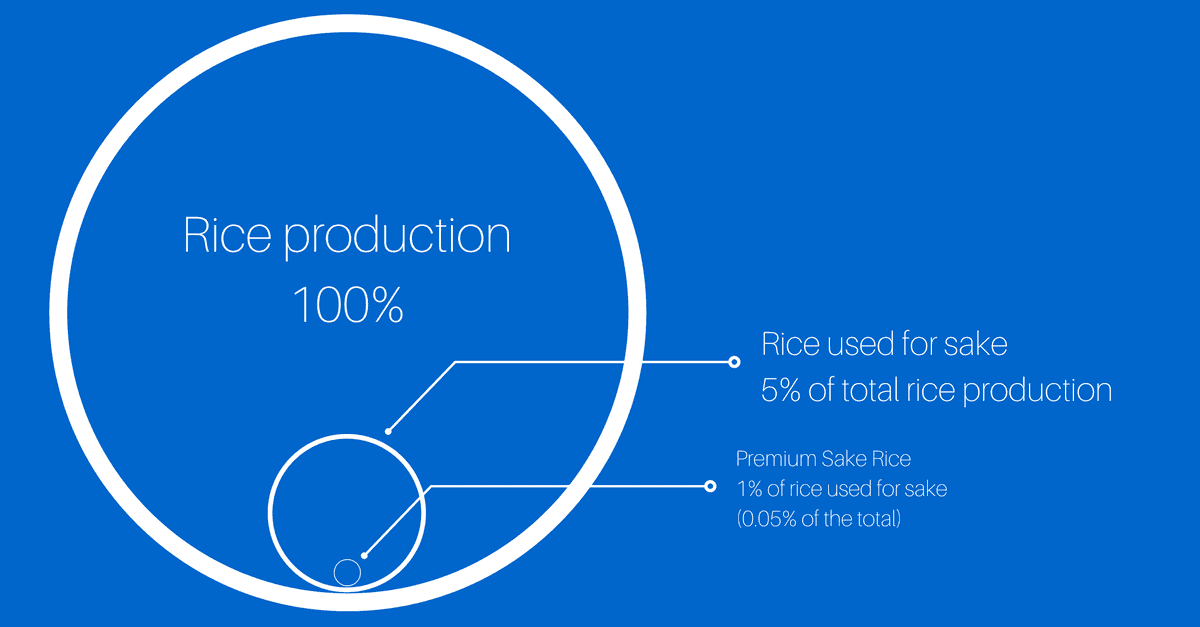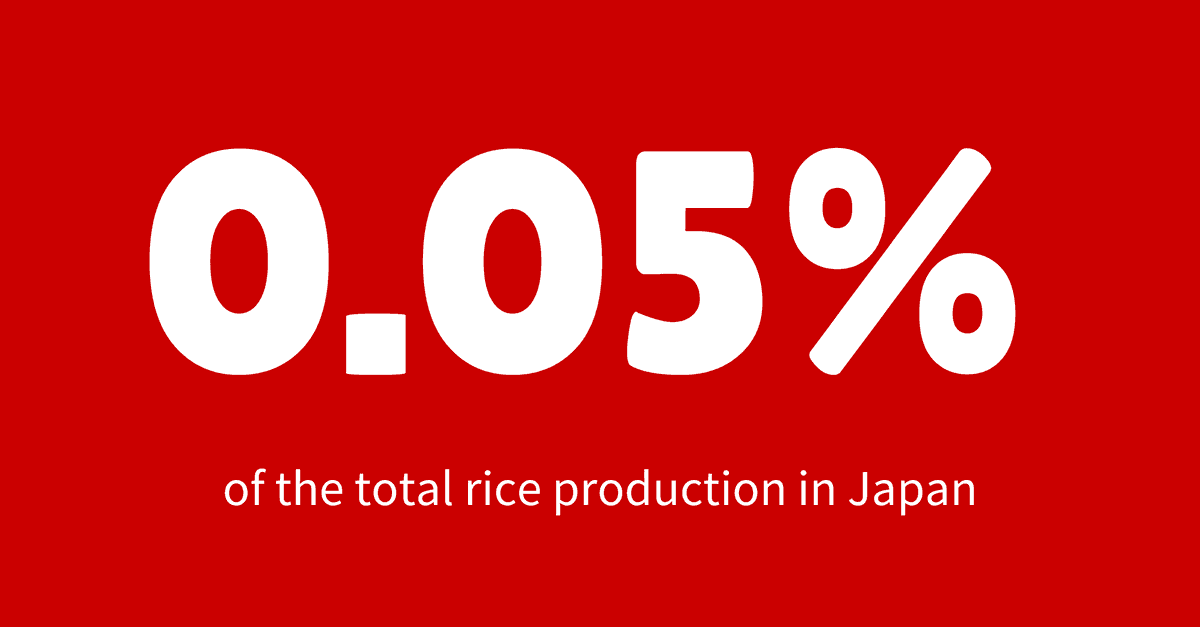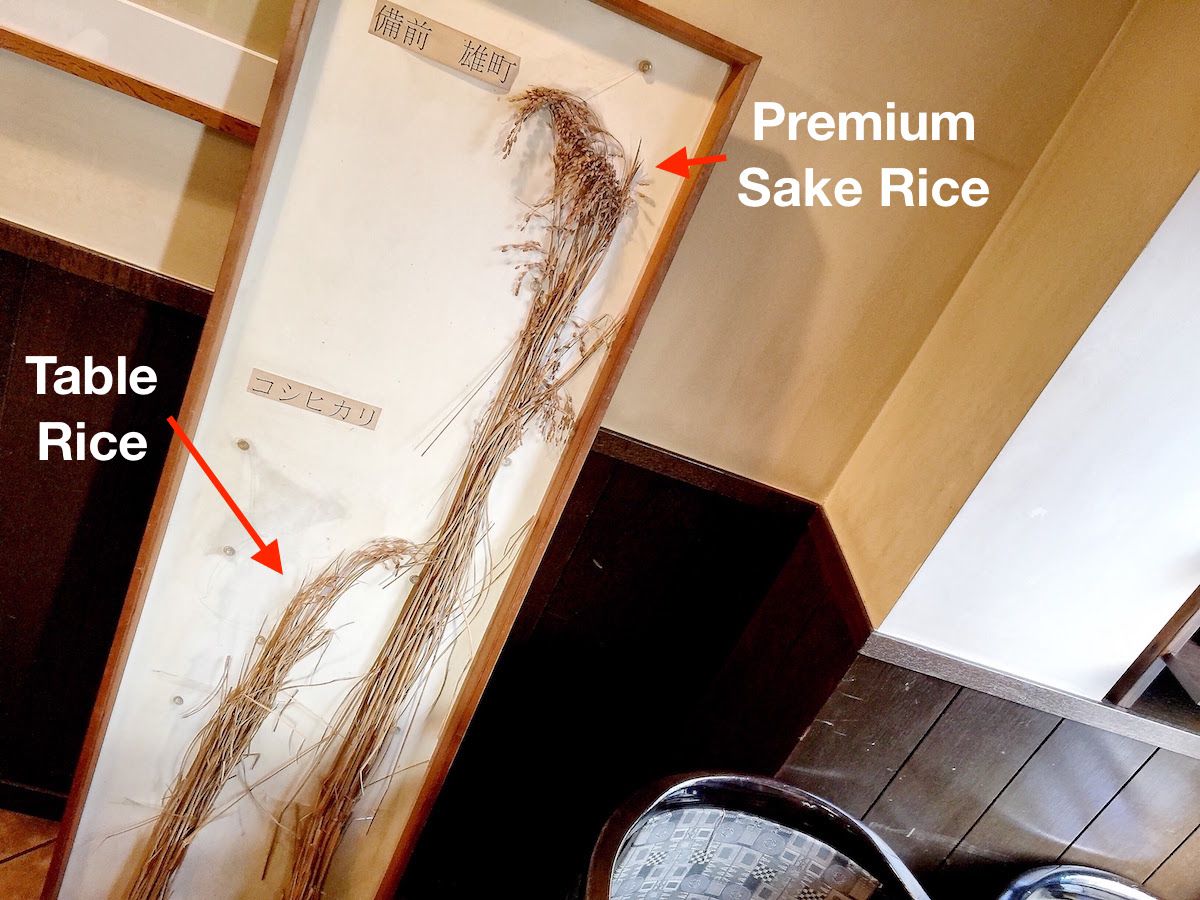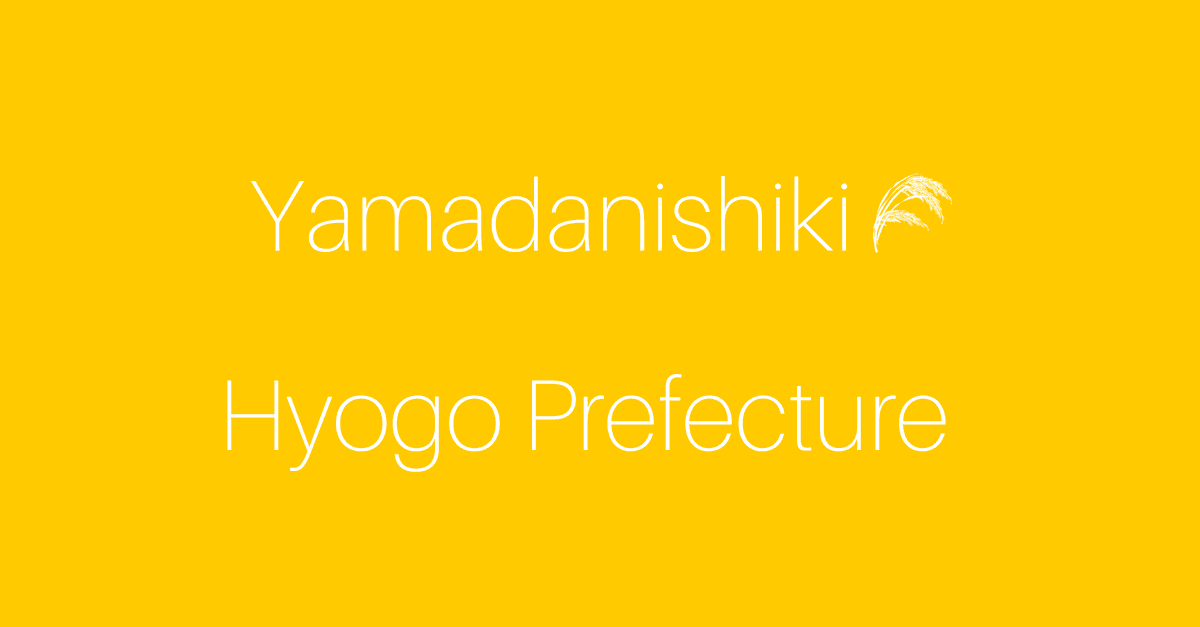Have you ever heard the term “Sake Rice”?
Yes, the Sake Rice is a rice that used to brew Japanese Sake.
Looking at “Sake Rice” in a Japanese dictionary, it is written as follows.
Rice made for sake brewing.
Quote: Weblio Dictionary
So, how about “Premium Sake Rice”? Have you heard about it? In Japanese, we call it “Shuzou Kouteki Mai (酒造好適米)” or “Jozoyou Genmai (醸造用玄米)”.
Only rice suitable for sake brewing is called Premium Sake Rice. In order to become Premium Sake Rice, the rice must meet some conditions defined by the ministry of agriculture in Japan.
So how does the condition like? Let me explain it.
What is Premium Sake Rice?

According to the Sake Navigator certification textbook, in Japan, rice used for making sake is about 5% of the total rice production. Among them, Premium Sake Rice is only 1%.
This means that Premium Sake Rice is being produced 0.05% of the total rice production.

How small is it!
Why is it so little? Firstly, one of the reasons is that the conditions for becoming sake brewery suitable rice are strict.
Conditions to be Premium Sake Rice
- Being large grains
- To have a big “Shinpaku” at the center of the grain
- Less protein and fat
- Absorbing moisture well
- The outside is hard, the inside is soft
It is because the rice with the larger grain is easier to polish than smaller one.
Shinpaku is the white thing that appears in the center of Sake Rice. The fact that there is Shinpaku means that there is a gap in the center of rice and the light is refracted. If there is a gap in the center of the rice, Koji east will easily penetrate into the inside.
The part around the rice usually contains protein and fat. Protein and fat are said like those make sake unpleasant taste. So Premium Sake Rice should have less protein and fat.
When washing rice, rice that absorbs water often gives better results.
When steaming a good Sake Rice, the outside is hard and the inside softens.
The other reason that Premium Sake Rice is produced only a few amount it is difficult to make Premium Sake Rice.
Why is making Premium Sake Rice difficult?
- The height of the rice is high and it is easy to fall down.
- For good sunlight and good ventilation, Premium Sake Rice has to plant at intervals of about twice as long as normal rice.
- Premium Sake Rice requires special provision for diseases and pests
Premium Sake Rice’s production is small because the certification conditions are severe and cultivation is also difficult.
By the way, the height of the rice of ordinary rice with Premium Sake Rice is this different.

The one on the right is Premium Sake Rice “Bizen Omachi” and the left one is “Koshihikari” which is ordinary rice. The difference is obvious at a glance!
Brands of Premium Sake Rice
Of the Premium Sake Rice, which is currently grown in Japan, the most popular are the following.
- Yamada Nishiki Rice (山田錦)
- Gohyakuman Goku (五百万石)
- Miyama Nishiki (美山錦)
- Omachi (雄町)
About Yamada Nishiki, I will describe it later.
Gohyakuman Goku is sake rice cultivated throughout Japan, mainly from the Hokuriku region such as Niigata and Toyama, Fukui and Ishikawa, north from Yamagata to the south and Oita.
Gohyakuman Goku means 750,000 tons of rice in Japanese. This name symbolized that the production volume of rice in Niigata Prefecture broke through 750,000 tons in 1957 when this Premium Sake Rice was grown at Niigata Agricultural Testing laboratory for the first time.
Gohyakugoman Goku seems to be unable to scrape a lot of its surface. However, this tends to make Sake dry, and it is often used for Sake in Niigata Prefecture, which is known to brew a lot of Dry Sake.
Miyama Nishiki is a sake rice grown mainly in northern Kanto and partly in Hokuriku, such as Akita prefecture and Yamagata prefecture. This rice is strong in the cold, so it is made in cold regions. Sake made from this rice is refreshing.
Omachi is sake rice which is cultivated mainly in Okayama prefecture. It is rice which was selected by Okayama agricultural testing laboratory in 1921 after refining the rice that Mr. Kishimoto who lived in Okayama prefecture discovered.
As Omachi is a weak rice against disease and pests, the number has drastically decreased once in the 1960s and 1970s. However, since breweries want to use this high-quality rice, Omachi has grown again in the 1990’s. Before the current popular Premium Sake Rice Yamada Nishiki appeared, sake using Omachi was frequently awarded in the contest.
What is Yamada Nishiki?
Well, here let’s talk about Yamada Nishiki who is the most popular Premium Sake Rice now.
Yamada Nishiki is Premium Sake Rice which is cultivated throughout Japan. According to the data of the Ministry of Agriculture, Forestry and Fisheries of Japan, Miyagi prefecture is grown in the northernmost region and Miyazaki prefecture is the southern region.
However, the most famous area as the production area of Yamada Nishiki is Hyogo Prefecture located in the Kansai region (western area of Japan).

Yamada Nishiki is a rice in which the part of Shinpaku grows big. For this reason, this rice is Premium Sake Rice which is used especially when building Dai Ginjo Sake. This rice was born in Hyogo prefecture agricultural testing center in 1923. Currently, many of Sake, which is awarded in the Japanese Sake contest, uses this rice as ingredients.
Yamada Nishiki is further ranked according to the district being cultivated. There are ordinary Yamada Nishiki and the highest quality Yamada Nishiki.
According to the website of Sake Brewery and Wikipedia, the rice field of the highest class Yamada Nishiki is located in Miki Shi and Kato Shi in Hyogo prefecture.
I stabbed pins in Google Map in those two areas. For example, it takes more than an hour to go from the downtown in Kobe by public transportation to this place. I have not been to this place either. I would like to see how Yamada Nishiki is planted all over the place someday!
Let’s go back to the features of Yamada Nishiki. The difficulty of cultivation is also one of the features.
It is difficult, Yamada Nishiki. It is much taller than other rice.
Quote: Kuheiji’s website
This is the word of Mr. Ogino who is a member of Kurodasho Yamadanishiki bukai in JA Minori Hyogo.
The fact that rice is tall is that it is easy to fall down by the wind. Yamada Nishiki has gained popularity in the market after difficult cultivation.
List of Premium Sake Rice cultivated throughout Japan
Finally, let’s introduce Premium Sake Rice which is cultivated throughout Japan.
This list is based on the materials announced by the Ministry of Agriculture, Forestry and Fisheries every year. Among them, I sorted Premium Sake Rice ‘s production area by prefecture by prefecture.
I think that it is somewhat fun because you can check in which prefecture, how much Premium Sake Rice is being produced.
How about the story of Premium Sake Rice, which influences the taste of Japanese Sake?
If you know more about rice, sake will be more delicious!
